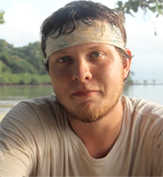


Information for Prospective Graduate Students (click to expand)
My work covers a relatively broad range of topics within physical anthropology, but I am most interested in working with students who want to investigate evolutionary questions through the quantification and analysis of morphological variation. I'm open to a wide range of research questions, and the variation under study could be in size, shape, and/or form; fossil and/or extant primates (including humans); postcrania and/or crania; adults and/or ontogenetic series. While I am potentially interested in working with students who want to conduct morphometric studies of living primate populations in the field, my expertise and experience is in skeletal morphology (but not forensics!). I tend to favor the inclusion of comparative taxa in analyses, and any dissertation project that I supervised would likely include a comparative extant sample, even if the primary questions relate to fossil hominins. Ideally a student who comes to work with me will have an interest in understanding and further developing quantitative methodologies, but at the very least an incoming student would be expected to take courses in quantitative methods and acquire a basic understanding of a broad array of analytical techniques appropriate to biological anthropology. If this sounds appealing to you, read on.
If you'd like to apply to work with me, I would recommend contacting me sometime in the fall semester to talk about your interests and about whether this is the right program, and whether I am the right advisor, for you to do the kind of dissertation project that you want to do. If so, I'd encourage you to apply as early as possible so that your application can be considered for funding. Applications to the Ph.D. program that are submitted by January 15th will be considered for funding for the academic year starting the following fall, and I would suggest that you get your complete application to UAlbany by January 1st so that it makes it from the grad office to the Department of Anthropology by the beginning of our spring semester. Also, we have both an M.A. and a Ph.D. program. If you want to get a Ph.D. here, make sure that you apply for the Ph.D. program even if you have not yet received a Master's degree because only students in the Ph.D. program are eligible for funding. You'll earn your M.A. along the way. Further information about applying can be found at the UAlbany graduate admissions site (www.albany.edu/graduate), and information specific to the Anthropology graduate program can be found here. If you think you might want to apply to work with me but aren't sure, feel free to drop me a line.
Contact Information:
Department of Anthropology
University at Albany - SUNY
Arts & Sciences Building, Room 237
1400 Washington Avenue
Albany, NY 12222
phone: 518-442-4772
email: agordon [at] albany.edu
Current Students

Former Ph.D. Students


Former M.A. Students